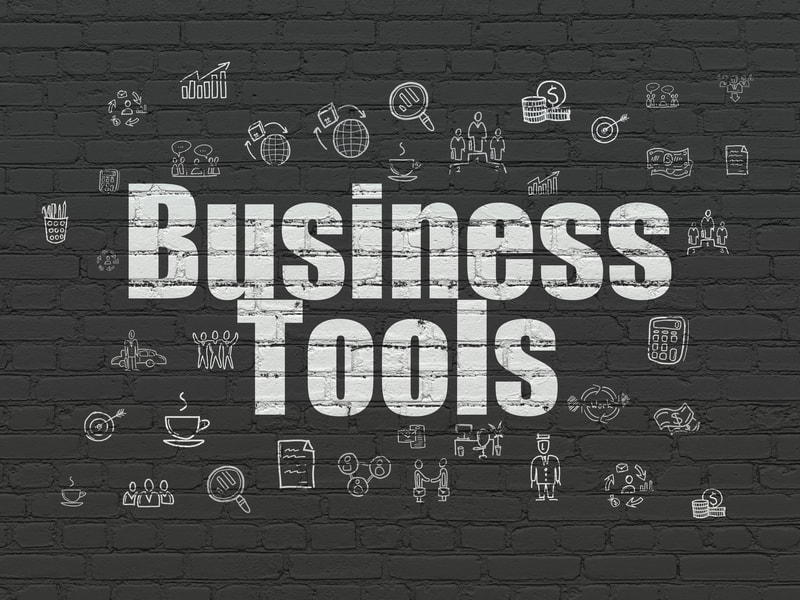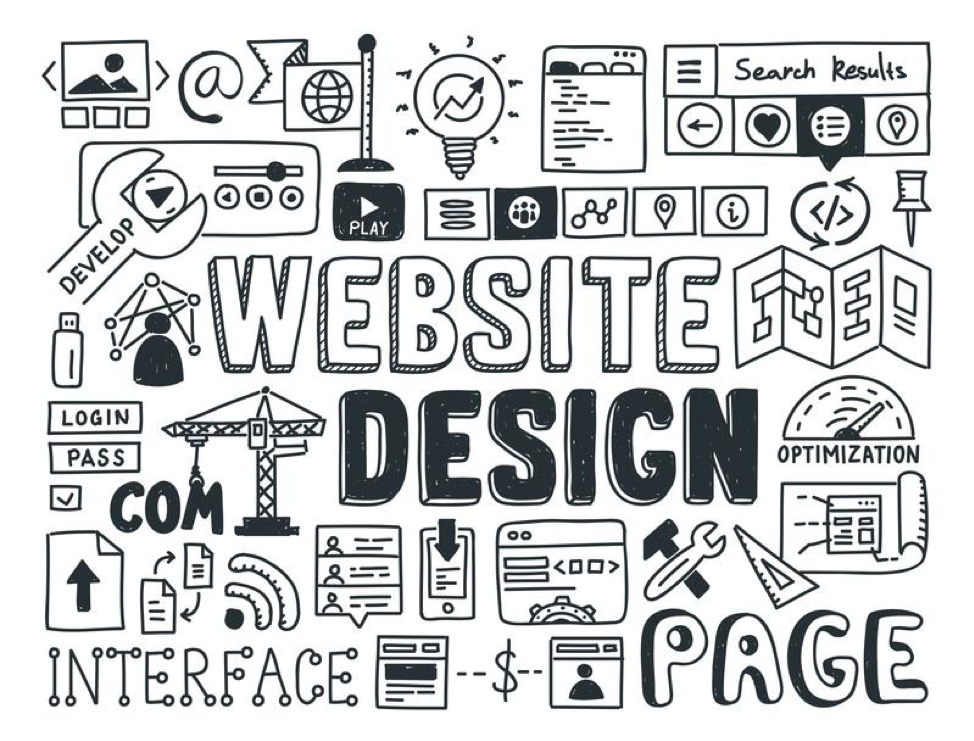|
Whether you are a professional marketer or an entrepreneur, you must use the best strategies to succeed in marketing. If you run a small business, proper marketing of your goods or services will create awareness and boost sales. Apart from creating an attractive website for your business, you need to use modern marketing tools to connect your business with the right audience. Using the right advertising tools will help you create a positive corporate image. Once your company gains an excellent reputation, customers will become loyal to your brand. The achievement will assist you to outshine your competitors in the business world. This article provides 5 essential marketing tools that you need to consider for your business.
1. Buzzsumo Founders: Henley Wing, James Blackwell Buzzsumo is a supportive online marketing tool used by thousands of small and mid-sized businesses in the world. You can use the app to grow your business and find the right influencers. Additionally, it will evaluate your competition and help you study social media trends, which will enable you to use the right marketing strategies to outperform your competitors. Using Buzzsumo, you can easily share your content with the right audience and view what your competitors are posting on social media and other sites. 2. Hootsuite Founders: Dario Meli, David Tedman, Ryan Holmes This is a perfect marketing tool that will allow you to schedule posts on various sites, including social media platforms. You can use the tool to schedule as many posts as you can, which will boost your marketing campaigns. 3. Womply Founders: Jeremy Richardson, Toby Scammell As a businessperson, engaging your customers online is an essential thing that you need to consider. Womply is the best software that will connect your business with your online customers. You will be able to answer their queries in real-time, which will boost customer loyalty and sales. 4. Biteable Founders: James MacGregor, Simon Westlake, Tommy Fotak Biteable will assist you to create and post exciting videos about your products or services on your social media accounts. For instance, you can use it to post an informative video demonstrating how to use a particular product. Visuals are engaging and attractive to customers. They will influence their buying decisions. 5. Trello Founders: Joel Spolsky, Michael Pryor Trello is a fantastic tool that will help you and your team to manage your marketing projects efficiently. For instance, before posting any advert on your social media accounts, you should post it on Trello for your team to see. The team will review the post and highlight critical areas that require changes. This process will save you time and strengthen your posts before posting them on social media. Additionally, your customers will trust you because of sharing informative posts regularly. As a marketer or businessperson, you should utilize the above marketing tools to improve your business. They will save you time and connect your business with loyal customers from home and abroad. Need more customers? We help businesses generate more leads and sales with internet marketing!
0 Comments
One of the best ways to grow your following, extend your reach, generate sales, and acquire customers is to run a giveaway on Instagram. Running Instagram giveaways can help your brand and business growth. However, it's vital that you know how to create a winning campaign. Without proper implementation, you'll be wasting your precious time and money with the giveaway. Here's our quick guide to creating a winning Instagram giveaway.
Step 1: Start with the Goal Before you do anything else, you want first to define the goal of your giveaway campaign. Are you looking to grow your followers? Do you want to promote your products or services? Perhaps you're looking to generate brand awareness and extend your reach. Your goal will define how your campaign will be designed. For example, it makes sense to highlight the main feature of your product and offer a discount code if the goal of the campaign to generate sales. Step 2: Choose the Audience and Appropriate Prize The next step is to think about the target audience. You have to be clear on who you're trying to reach. For example, a beauty company may want to target women that are young adults. This audience should play a part in choosing the prizes. One of the reasons why some contests and giveaways fail is because the award isn't enticing enough to the audience. Make sure that the giveaway prize is something that people actually want to win. Step 3: Decide the Entry Criteria The entry criteria for your giveaway should be aligned with your goals. For example, if you're looking to grow your audience, you'll want to get people to repost your content and tag their friends. If you want to improve your brand, a good idea for entering the giveaway is to get people to submit their own content. Many brands have used this user-generated content approach with excellent results. Finally, decide on how long the giveaway will run for. Note: Also make sure you follow Instagram's promotion guidelines. Step 4: Create a Marketing Plan and Strategy The most important part of your contest or giveaway will be the marketing. You can't expect your campaign to take off on its own. You have had a solid plan and strategy to promote the giveaway. The prominent place to start is to leverage your existing audience and traffic your website or blog receives. Here are some other ideas you can use:
This quick guide should help you create a solid Instagram giveaway campaign. Just make sure that you cover every step accurately so that you don't make mistakes when the actual campaign is launched. If you want to find out more ways to improve your social media marketing, check out our articles on social media marketing! The internet is useful for a variety of reasons, from tracking down information to managing your finances. As you may expect, it also has a number of dangers hidden beneath the surface. The following is just a handful of some of the internet's biggest dangers.
Fraud As technology has grown in complexity, thieves have found a myriad of ways to take unsuspecting individuals and even businesses for a ride. From identity theft to phishing emails, the internet is rife with fraud. There are even websites that masquerade as legitimate ones for the purpose of obtaining customers' login information. Depending on how many of your customers' accounts are affected, this could potentially mean millions in losses from fraudulent charges and customer refunds. Doxxing One disturbing type of cyberbullying is called doxxing. When someone doxxes someone else, it means that they find and publish sensitive information about them, including personal phone number and home address. This information potentially allows others to masquerade as the victim online to receive credit cards, obtain loans, open bank accounts and more in the victim's name. If your company lends money to customers, you could potentially lose out on interest payments if the victim did not actually apply for those credit cards or loans. Businesses can be victims of doxing as well. Some famous examples of corporate doxing include the Ashley Madison breach and the film thefts carried out against Sony Pictures. If your company's sensitive information is stolen and leaked to the public, it could potentially cut into sales, lead to class-action lawsuits, loss of customers due to lack of trust and much more. Depending on the industry, it could even lead to the business closing entirely. Hacking and Viruses This is more what people think of when they think of online dangers. It's a bit of a classic at this point: someone takes control of your computer, and you have no control over it. These days, it isn't enough to just be careful what websites you visit. Antivirus software is also a must, including at the corporate level. What separates these two things is how they work. Hacking is a result of people finding flaws in existing, legitimate programs or company mainframes, which you use every day to conduct business. Viruses, on the other hand, are programs explicitly written to harm your computer system, and they take on many forms. They can even impersonate or "hide" within legitimate programs. Ransomware Ransomware is a specific kind of program that locks access to a computer and deletes all the files within it unless the victim pays a ransom, often in some form of cryptocurrency. It can be removed, but it is paralyzing if it somehow gets on your system. This is not a common occurrence, but ransomware's appearance has been steadily increasing. If ransomware were to spread to computers with sensitive information, it could grind your business to a complete halt. For example, how would you correspond with a supplier if you have a store chain? Without that contact information or internet access, it would be next to impossible. The Internet of Things The Internet of Things is not a threat on its own. In fact, your business might offer or use a product that falls in this category. Think internet-enabled televisions, fax machines, printers, cameras, smart watches, and similar equipment, and that is essentially the Internet of Things. Why is it dangerous? Because, according to the FTC, 25 billion such devices are online worldwide, with the number growing daily. These devices, which record a variety of sensitive information, can be hacked and the information stolen. This could be a disaster for a business of any size because customer data, correspondence, and contact information are just a few of the things that could potentially be jeopardized. How Do I Protect My Business? Protecting your business from these online threats is equal parts awareness and scrutiny. Educate your employees about the practices thieves employ, such as impersonating technical support and asking for a password. Also, tell your employees to scrutinize - or, even better, delete - anything unfamiliar in terms of communication. If it comes from outside the company somehow, and it doesn't look like it belongs in your correspondence, it may be a scam. Also, take the time to invest in skilled IT personnel that can counter and eliminate these threats as they arise. Penetration testers are one example of personnel you should have on hand because they seek out flaws in your company's network. This allows the appropriate staff to address the problem sooner rather than later. Sources: Digital Media And Your Website
When designing your website, you want content that will catch the attention of your viewers. It's always in the best interest of your website to operate smoothly, whether you are writing captivating articles, promoting a product, selling professional services, or building traffic for affiliate marketing companies. Search engine optimization and effective keywords play the important role of bringing customers to your content, but you likewise need a polished design to engage viewers. Adding digital media in the form of images or videos can be a great stepping-stone for your business. Let's go over a few easy steps to ensure that your high-quality traffic is greeted with an equally high-quality page layout. Find out ways you can get a better conversion rate with an efficiency-oriented approach. How To Use Images There are three primary sources through which website designers acquire most images. The first and easiest is by going through a copyright-free online source. There are millions of images available online that are copyright free, and most of those images don't require any citations or credits to the photographers. Secondly, you have paid images which you can purchase the rights to, either per-use or permanently. These images are typically of a higher quality than the free-to-use media. Lastly, you can hire a professional photographer directly which will give the advantage of very specific or personalized images. Directly hiring a photographer works well when building a brand specific domain. Usually, depending on your host and software, images can be integrated with HTML coding through a third-party host address, or uploaded directly to your site and encoded into your postings. Keep in mind that you should ensure links are never altered to reduce broken links and dead pages. When uploading pictures directly on your domain, include relevant keywords in the image descriptions and include a similar alternate description to increase your SEO scores. When incorporating images into your postings, you should always include a clickable hyperlink in the embedded images to relevant pages within your site. How To Incorporate Video Similar to images, videos can be obtained through third-party companies or made directly through contracting with a video editor. Several media companies have easy-to-use web integration built into their players, which can make creating your own content extremely low-cost. You can upload video directly to your domain or allow a third-party hosting site to host your video for you. In order to reduce data usage for your domain, you should always consider outsourcing your hosting. Be vigilant with your outsourcing. A broken or removed video can go unnoticed if an error occurs, or if it is removed from the host site. Also, keep in mind that different video players a host may utilize can have various load time efficiencies. Occasionally test your pages in order to provide the reliable content your customers expect. The last thing you want is a great landing page with unplayable video content. Avoid looking unprofessional with diligent page reviews. How To Improve Load Time And Reduce Data Usage Search engines base their ranking scores on several factors, including cross-links, keyword density, readability, and load time. If your page takes more than a second or two to load, consider optimizing your pages. This can be achieved by reducing the size of photos and videos. If you find your page falling short of fantastic efficiency, consider reducing the frequency of which your media content appears on a single page, or decreasing the file sizes. Images and textures tend to be the main issue with page optimization. Avoid high-resolution, full-scale images in your content while keeping a tasteful tone to your website. Most web design software comes with built-in preview features for multiple platforms including tablets, internet browsers, and mobile browsers. Be sure to check the efficiency of each one to safeguard an overall smooth speed across devices. As a rule of thumb, upload images and videos at around 60 percent quality level in regards to the original content size, because optimized images lower load time. Keep thumbnails at a low resolution to avoid browser lag. Use a high speed third-party hosting site with automatic resolution settings for viewer-friendly video performance. Meet your Traffic With Quality However you decide to use these guidelines to build your website, the presentation is the key. Whether it's through content, eye-catching photos, enticing videos, or a smooth loading experience, your prospective followers should be greeted with a professional ambiance. You can up this professionalism with having chat on your website to help your customers reach out to you more easily. Just remember that most customers refuse to patronize a business that has been unresponsive for 24 hours. Remember when adding any type of new tech to your website, that you know how to use it and that you use it well. All of the features of your pages work together to generate conversion from traffic, towards profit. Using your skills and creativity you can accomplish your goals, and achieve the atmosphere you need to win the attention of your target audience. For more information on how a well-designed website can improve the rankings and search engine optimization of your website, please contact Crawford Designs! References: Forbes | 4 Tips To Ensure Your Website Design & SEO Is Done Right Cortez Visual | 6 Keys to Better SEO Business 2 Community | 7 Tricks to Make Your Web Design SEO Friendly Podium | Set Up Google My Business |
Archives
June 2024
Categories
All
|
Website Design Gettysburg | Services | Website Designer Near Me | Prices | Contact Gettysburg Website Design | Design Blog
From Our Blog
3 Steps to Improve Your Google Business Listing Ranking • Search Engine Optimization + GMB = More Leads & Sales! • Website SEO Checklist
Secrets To Building an Appealing Website For Any Niche
Secrets To Building an Appealing Website For Any Niche
|
Crawford Designs, LLC
Gettysburg Website Design |
© 2021 Gettysburg Website Design.
717-855-3184 |
SERVICES: Website Design, Local Gettysburg Website Design Services, Website Design Company, Website Development Company, Freelance Web Designer, Web Design Company, Web Development Company, Business Websites, Corporate Websites, Business Marketing and Advertising. Website Maker, Web Site Creator, Web Builder, Done For You Websites, Hire a Website Designer, How to Get a Business Website, best website design companies for small business, website design pa, website for small business owners, web design and marketing company, top website design company, york county web design, local web design companies near me, small business web design near me, web design westminster md, web designers in hanover pa, small design companies







 RSS Feed
RSS Feed

